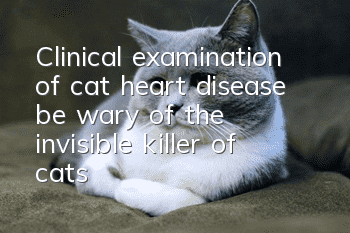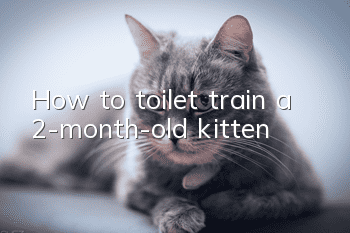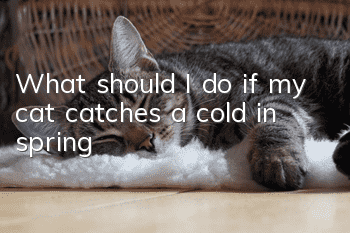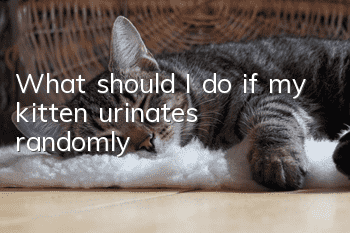Clinical examination of cat heart disease, be wary of the invisible killer of cats!

Cat
Clinical examination of cat heart disease, be wary of the invisible killer of cats! Heart disease is a disease prone to elderly cats. Heart disease is mostly caused by congenital factors. Of course, acquired nutrition and acquired factors are not excluded. Heart disease caused by other accidents has always been a headache for doctors. First of all, its diagnosis is extremely troublesome. It is common to see symptoms of heart disease already in the advanced stages, so this requires early examination and diagnosis.
1. Basic inspection
The attitude and behavior of the animal can provide clues to discover the current problems or seriousness of the animal itself. Depression, alertness, listlessness, or hyperactivity can be seen. Animals that refuse to lie down may have severe pulmonary edema, pleural effusion, pericardial effusion, pneumothorax, diaphragmatic hernia, or respiratory disease. If the animal stands with elbows straight, head extended, nostrils enlarged, and mouth breathing, it may have difficulty breathing and must be treated immediately, which may be life-threatening. If a cough occurs during a physical examination, it will help the clinician to observe the pattern or sound to help identify the problem.
Head: Check for any asymmetry and swelling
Eyes: Changes in the eyes should be checked for systemic disease. Diminished pupillary response in hypertensive cats is due to retinal detachment or hemorrhage. Fundus examination will reveal mastoid edema along with hemorrhage or retinal detachment. Central retinal atrophy occurs in one-third of cats with dilated cardiomyopathy due to taurine deficiency. Degraded areas appear horizontal, linear and highly reflective.
Ears: There are no specific changes in the cardiovascular system with the ears. The color change of the ears is usually observed when cyanosis occurs.
Nose: Check for changes in the nose based on symptoms of disease.
Mouth: Pay special attention to the color and perfusion of the mucosa. A CRT greater than two seconds may be due to reduced cardiac output. Most animals with heart failure have normal mucosal color until the heart failure is severe. Therefore, mucosal color and perfusion are not sensitive indicators of proper blood circulation.
Cyanosis: As mentioned above, congestive oral mucosa (dark red to gray) is due to an increase in blood cells (polycythemia), which may be caused by chronic right-to-left vascular shunting. Pale mucosa—anemia or hypoperfusion. Oral mucosa should be compared with posterior mucosa (vagina, foreskin). Cyanosis can be distinguished in dogs with right-to-left shunts in the PDA. Severe oral calculus, gingivitis, and alveolar pyorrhea (pyorrhea) can be the main sources of bacteremia and even endocarditis.
Neck: Jugular venous pulsation needs to be assessed when the animal is standing and the head is in a normal position. Any pulsation beyond the upper third of the neck is abnormal.
2. Respiratory examination
The respiratory rate of a healthy cat in a quiet state is 20 to 30 times per minute. During breathing, the chest cavity will follow the movement of the breath. rise and fall with frequency, and the rise and fall of the abdomenIt is not obvious if it is lying down.
The speed and depth of breathing can reflect the cat’s health status to a certain extent. Accelerated breathing and shallow breathing may occur during intense exercise or stress, which are normal physiological changes. However, if the cat’s breathing rate increases in a quiet state, each breath becomes deeper or shallower, or mouth breathing occurs, it indicates that the cat’s body is abnormal. For example, in pneumonia, cats will have symptoms such as accelerated breathing rate, coughing, and runny nose; while in emphysema, cats will breathe quickly and shallowly, and the ups and downs of the abdomen are usually greater than the rise and fall of the chest; if the cat's breathing rate is found to be very hesitant, some may even reach 80 Times/minute or more, and the gums and tongue turn purple at the same time, it indicates that the cat has very serious difficulty breathing and the body is in a state of severe hypoxia. At this time, emergency oxygen inhalation and other treatment measures are needed immediately, otherwise it will easily die. This condition is more common in some middle-aged and older cats. These cats usually have heart disease or pleural fluid. In this case, the cat must be kept quiet and must not make the cat too nervous, otherwise it can easily lead to death. When a cat has the above situation, it should be sent to the animal hospital for a comprehensive examination as soon as possible. The doctor will conduct various necessary examinations on the cat, such as chest X-ray examination, ultrasound examination, blood test, etc., and take corresponding treatment measures.
3. Heart rate check
Heart rate or pulse is an important physiological indicator that reflects the heart function and blood circulation of cats. Under normal circumstances, the heart rate is 160 times for young cats. /min, 120-140 times/min for adult cats.
The heart of a cat is on the left side of the chest near the elbow joint of the forelimb. A cat with a normal or thin body can clearly feel the heart beating regularly by placing your hand close to this part, while an obese cat can clearly feel the heart beating regularly by placing your hand close to this part. Cats sometimes have a harder time feeling it. The cat's pulse is usually measured at the femoral artery on the inner thigh of the hind limb. You can clearly feel the pulse beating by pressing your index finger and middle finger close to this part. The number is basically the same as the heartbeat. Nervous and intense exercise can cause the heart rate and pulse to increase, even as high as 250 beats/minute in some excited cats. Under normal circumstances, a cat's heartbeat and pulse are regular and powerful, but some cats with heart disease or weak constitution usually have various abnormalities in their heartbeat and pulse, such as irregular beating, sometimes fast, sometimes slow, and the pulse will also become irregular. Weakness, these all indicate that the cat's heart function is abnormal. In addition to abnormal heart rate or pulse, common clinical symptoms of cats with heart problems include listlessness, lack of energy, panting, and hypoxia, etc.
- What should I do if my Ragdoll cat is sick?
- What should I do if my cat has a bad temper? How to make him soft and gentle!
- How often should cats eat chicken breast?
- How to tell when a cat is giving birth after she is pregnant?
- Are all orange cats fierce? What causes them?
- What color are Persian cat eyes?
- What does a cat do when it scratches the ground? It's to cover up its smell.
- How to make cat food Homemade cat food is healthier
- Diseases of Senior Cats
- Can cats take a bath?



